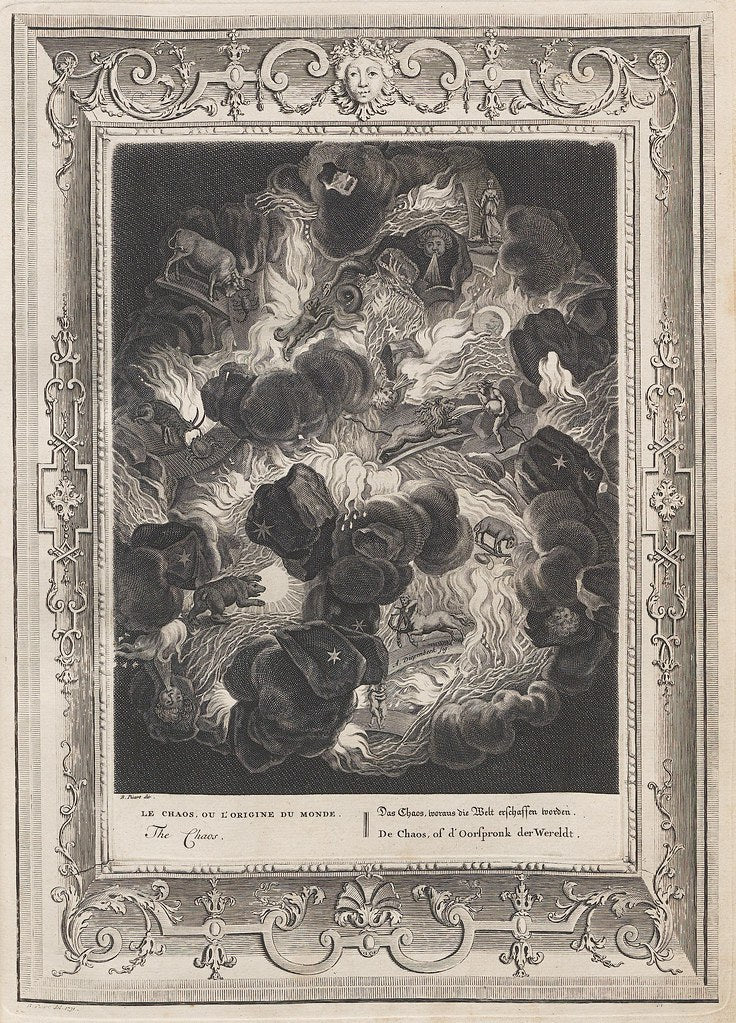ANTONIO RAIMO GALLERY
Picart, Mythology, Temple of Muses, The Damaios
Picart, Mythology, Temple of Muses, The Damaios
Couldn't load pickup availability
Bernard Picart’s work, particularly in his comprehensive series *Cérémonies et coutumes religieuses de tous les peuples du monde* (Religious Ceremonies and Customs of All the Peoples of the World), includes detailed depictions of mythological and religious themes. Although less commonly known than some of his other illustrations, the **Temple of the Muses** and figures such as **The Damaios** (or **Daimones**, **Daemon**, or **Daemons**) are significant topics in his work.
### **Temple of the Muses**
- **Concept and Significance:**
- **Symbolism:** The Temple of the Muses is a metaphorical or literal space dedicated to the Muses, the nine goddesses of the arts and sciences in Greek mythology. Each Muse presides over a specific domain, such as epic poetry, history, music, and dance.
- **Architecture and Artistic Representation:** In Picart’s illustrations, the Temple of the Muses may be depicted as a grand structure adorned with classical elements like columns, statues, and decorative motifs. The temple serves as a focal point for artistic and intellectual inspiration.
### **The Damaios (Daimones)**
- **Identity and Role:**
- **Nature of Daimones:** In Greek mythology, daimones (or daemons) are intermediary spirits or divine beings that exist between gods and humans. They are not strictly deities but are associated with various aspects of human life, influencing fortunes, guiding individuals, and representing natural forces.
- **Depictions:** Daimones can be seen as both beneficial and malevolent spirits, and they often embody various natural or abstract concepts. They are generally portrayed as ethereal or semi-divine figures with distinct attributes.
- **Picart’s Illustrations:**
- **Artistic Representation:** In Picart’s illustrations, daimones might be depicted in scenes involving mythological narratives, where they interact with gods, heroes, or humans. These representations would capture the essence of daimones as intermediaries or symbolic figures.
- **Details and Style:** Picart’s engravings would showcase the daimones in a manner consistent with classical artistic traditions, highlighting their roles and characteristics. The detailed engravings would include attributes and symbols associated with each daemon, contributing to a deeper understanding of their mythological roles.
### **Artistic and Historical Context:**
- **Detailed Engravings:** Picart was renowned for his precise and intricate engravings, which aimed to provide a thorough representation of mythological and religious themes. His work reflects a commitment to historical accuracy and artistic detail.
- **Influence:** Picart’s illustrations played a significant role in the 18th century, influencing both scholarly and popular perceptions of mythology. His work helped preserve and disseminate knowledge of classical themes and deities.
- **Educational Value:** The depiction of the Temple of the Muses and daimones in Picart’s work offers valuable insights into how these mythological elements were visualized and understood during his time. These illustrations serve as a reference for studying classical mythology and artistic representation.
### **Summary**
Bernard Picart’s illustrations of the **Temple of the Muses** and **The Damaios (Daimones)** are notable for their detailed and historically informed depictions. The Temple of the Muses represents a space dedicated to artistic inspiration, while the daimones are intermediary spirits with roles in mythological narratives. Picart’s work provides a rich visual record of these themes, contributing to the study and appreciation of classical mythology and art.

-
Shipping
Share the details of your shipping policy.
-
Returns
Share the details of your return policy.
Image with text
Pair text with an image
Pair text with an image to focus on your chosen product, collection, or artist. Add details on availability, style, or even provide a review.
Image with text
Pair text with an image to provide extra information about your brand or collections.

